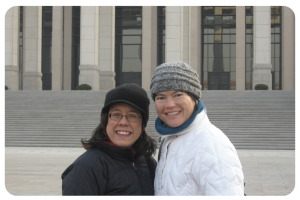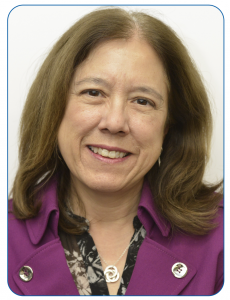‘Sailing Your Own Path’: An Interview with Jeri Mulrow
Claire Bowen, Urban Institute
Her winding career path started after graduating with her master’s in statistics at Colorado State University. She had an opportunity to work locally at the National Institute of Standards and Technology in Boulder, Colorado, through faculty connections. She reflected, “It was my first job and [I] really enjoyed it. I thought, this is the best job ever!” She then joked, “It was my first job, and it was the best.” Her enjoyment came from working on a lot of cool and interesting research projects that were a mix of theory and practical applications.
Soon after, she shifted her career into academia to solve her “two body problem,” the problem of navigating dual careers for life partners. Her family moved to Illinois, and she taught as a lecturer at Southern Illinois University.
However, Mulrow quickly discovered teaching “wasn’t [her] cup of tea” and sought a new position as a mathematical statistician at the Internal Revenue Service Statistics of Income (SOI) Division in Washington, DC. For eight years, she tackled several challenging and interesting problems at SOI before returning to Illinois as a statistician for NORC at the University of Chicago and then going back to DC as a senior manager at Ernst & Young.
Still following her passion for interesting challenges, Mulrow returned to work for the federal government, moving to the National Science Foundation National Center for Science and Engineering Statistics (NCSES). She found NCSES provided ample opportunities to explore and tackle open-ended problems, which led her to heading up the center as deputy director.
After serving at NCSES for 15 years, Mulrow wanted a change of pace and became the principal deputy director of the Bureau of Justice Statistics. She remained there for three years before leaving government and taking her current position at Westat.
Throughout our conversation, Mulrow noted supervisors who shared a similar vision for wanting to “change things up” and were advocates for her career.
She described both Fritz Scheuren at SOI and Lynda Carlson at NSF as forward-thinking individuals who were open to change. Mulrow also had candid conversations with them about what she did or did not like, so they could easily advocate for her career. For instance, she wanted to participate in a month-long government leadership training program that would not have been possible without Carlson’s support.
Mulrow remarked that finding people who can advocate, mentor, or champion another person’s career is a mix of luck and hard work. In other words, she sought and developed relationships to increase the chances that someone would recognize her hard work.
Jeri found statistics to be a great foundation for her career and the federal statistics system to be a supportive environment for women, especially within leadership positions.
As she pursued her graduate degree, she witnessed women in statistics already blazing the path for the next generation:
- Barbara Bryant—US Census Bureau director during the 1990 Census
- Barbara A. Bailar—1987 president of the ASA and US Census Bureau associate director for statistical standards and methodology
- Cynthia Clark—1989 president for the Caucus for Women in Statistics, administrator for the National Agricultural Statistics Service, and director of the Council of Professional Associations on Federal Statistics
- Katherine Wallman—Chief statistician of the United States from 1992–2017
From Mulrow’s perspective, these women and others in lead statistical roles helped remove some (but not all) of the stereotypical challenges women often face in STEM.

Mulrow and her sister, Cathy Grace, in front of the National Museum of China just outside the Forbidden City
“Being a part of the ASA has helped me a lot, both directly and indirectly, by getting to know so many people and building many relationships.”
When asked about overcoming personal and professional challenges, Mulrow said, “I always think of the sailing analogy. We rarely go from point A to point B in a straight line. Sometimes the wind is blowing in the opposite direction you want to go, but you still have to try to figure out how to move ahead and use the sails. You might head out one way before you flip your sails to change the direction to try and get back on course. This tactic is often not efficient and can be very frustrating, but I tell myself that maybe I will learn something along the way, or maybe I’ll come up with something more creative than I thought. We have to keep looking forward, learning along the way, and correcting the course with our sails, or we will instead hit a wall and go nowhere.”


















